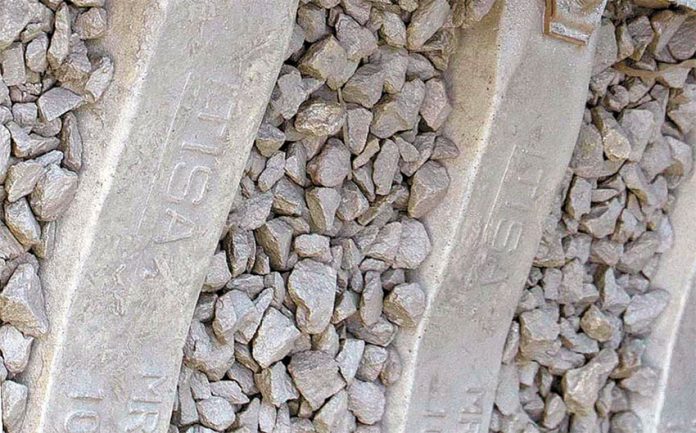The elevated section of Line 12 of the Mexico City Metro, part of which collapsed on May 3, was overburdened by as much as 7,000 tonnes due to the replacement of ballast in 2015, according to a report by the newspaper Milenio.
New ballast was placed on tracks between Culhuacán and Tláhuac after structural repairs were carried out on the elevated section in 2014 and 2015. The quality of the ballast previously used was deemed inadequate and substandard by a company contracted by the Mexico City government. The firm, Systra, recommended its replacement.
But the new ballast was heavier than that previously used and overloaded the elevated section by up to 7,000 tonnes, said Milenio, which accessed information from the Mexico City Ministry of Public Works.
The additional weight wore down the structure supporting the elevated section of the line including its concrete columns, the newspaper said.
Former Public Works Minister Alfredo Hernández and ex-Metro director Joel Ortega took the decision to replace the old ballast and selected the new ballast, which was purchased in Acolman, a México state municipality just north of the capital.
Milenio reported last month that replacement rails, sleepers and fasteners installed in 2014 and 2015 added 2,367 tonnes of weight. The new ballast alone weighs almost triple that amount.
“Experts consulted by Milenio commented that this excess load took the structure to its elastic limits, creating cracks, fragmentation and deformation [that] damaged [metal and concrete] sheets, beams and columns,” the newspaper said, referring to the weight added by the rails, sleepers, fasteners and ballast. The situation worsened as a result of two powerful earthquakes in 2017, Milenio added.
The Norwegian firm DNV – hired by the Mexico City government to conduct an independent investigation into the causes of the May 3 overpass collapse that claimed the lives of 26 people – said in a preliminary report that a series of faults during construction caused the collapse.
DNV’s report noted deformations, fractures and displacement of beams that form part of the structure that supports the elevated section. The excess weight placed on the structure during a period of several years may have contributed to the collapse, the Milenio reports suggest.
DNV will release a final report detailing the results of its investigation into the cause of the tragedy later this year.
With reports from Milenio
